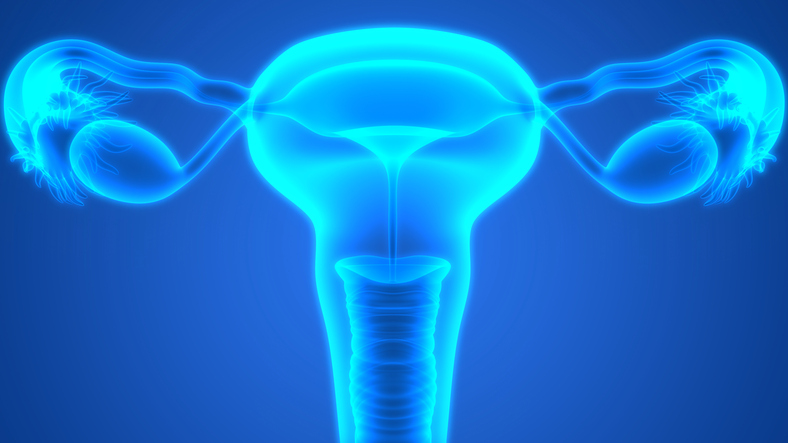Science Highlights
Female ‘Organs-on-a-chip’ Capable of Replicating Complex Hormonal Cycles
 Researchers supported by the Tissue Chip for Drug Screening program have developed a model of the human female reproductive system on a chip that is able to mimic the complete 28 day menstrual cycle. This class of technology, often referred to as organs-on-a-chip, is designed to allow researchers to better study human cells outside of the body in environments that closely resemble what they would experience inside of the body. It is hoped that in the future these chips can replace animal models, which sometimes do not replicate what will eventually be observed in humans, for testing the toxicity of new drugs.
Researchers supported by the Tissue Chip for Drug Screening program have developed a model of the human female reproductive system on a chip that is able to mimic the complete 28 day menstrual cycle. This class of technology, often referred to as organs-on-a-chip, is designed to allow researchers to better study human cells outside of the body in environments that closely resemble what they would experience inside of the body. It is hoped that in the future these chips can replace animal models, which sometimes do not replicate what will eventually be observed in humans, for testing the toxicity of new drugs.
In this new study, Dr. Teresa Woodruff and colleagues were able to construct a miniature female reproductive system that includes ovaries, fallopian tubes, uterus, cervix, and liver (an important organ for drug metabolism) that can be studied in the laboratory. Each of the miniature organs are formed from the appropriate cell types grown in small plastic cubes and are then connected with microtubing that allows computer controlled flow of liquids containing nutrients and hormones much like the bloodstream would connect organs within the body. This artificial female reproductive system, which the research team has called EVATAR, is generated from human female reproductive tissues donated from surgery patients, except for the ovaries, which are from mice. Healthy human ovaries are not typically removed surgically. By adding the appropriate hormones to the system, Dr. Woodruff was able to demonstrate EVATAR was able to mimic an entire 28 day menstrual cycle, as measured by the cycling of hormones in the system and ovulation.
EVATAR represents a significant advancement in the ability to study the female reproductive tract, not only for drug testing, but also as a model for diseases such as endometriosis, cervical cancer, and infertility. This research was supported by the National Center for the Advancing Translational Sciences’ (NCATS) Tissue Chip for Drug Screening program with funding from NCATS, the National Institute of Environmental Health Sciences, the Common Fund, the National Institute of Child Health and Human Development, and the Office of Women’s Health Research.
Learn more about this research by watching a video produced by Northwestern University and by reading the press release.
Reference:
- A microfluidic culture model of the human reproductive tract and 28-day menstrual cycle. Xiao S, Coppeta JR, Rogers HB, Isenberg BC, Zhu J, Olalekan SA, McKinnon KE, Dokic D, Rashedi AS, Haisenleder DJ, Malpani SS, Arnold-Murray CA, Chen K, Jiang M, Bai L, Nguyen CT, Zhang J, Laronda MM, Hope TJ, Maniar KP, Pavone ME, Avram MJ, Sefton EC, Getsios S, Burdette JE, Kim JJ, Borenstein JT, Woodruff TK. Nat Commun. 2017 Mar 28; 8:14584.
Read more about this research in the news:
- Menstrual cycle recreated 'in a dish'. BBC
- "Menstrual Cycle on a Chip" Offers a New Window into Female Physiology. Scientific American
- Device Mimicking Female Reproductive Cycle Could Aid Research. NPR
NIH funds development of tissue chips to help predict drug safety
Seventeen National Institutes of Health grants aimed at creating 3-D chips with living cells and tissues that accurately model the structure and function of human organs such as the lung, liver and heart have been awarded. Once developed, these tissue chips will be tested with compounds known to be safe or toxic in humans to help identify the most reliable drug safety signals.
Read More
New interagency collaboration to accelerate therapeutics development
The NIH in collaboration with DARPA and the FDA will work together on a groundbreaking therapeutic development initiative to advance the development of new technologies aimed at streamlining the drug development pipeline. The initiative will support the development of human microsystems, or organ “chips,” that can be used to screen for safe and effective drugs far more swiftly and efficiently than current methods, and before they are tested in humans. These microsystems will use specific cell types that reflect the biology of several different organs and tissues, and will be integrated together to model the connection between different organ systems in the human body. This integration will allow researchers to assess how drugs metabolized by one organ affect other organs or systems. It is hoped that the development of such microsystems will allow faster and more accurate measures of drug toxicology and efficacy, thereby reducing the time and cost associated with new therapeutics development. Seventeen NIH grants have recently been awarded to support this initiative. For more details about each project, please visit https://ncats.nih.gov/research/research-activities/tissue-chip/projects/tissue-chip-development.



